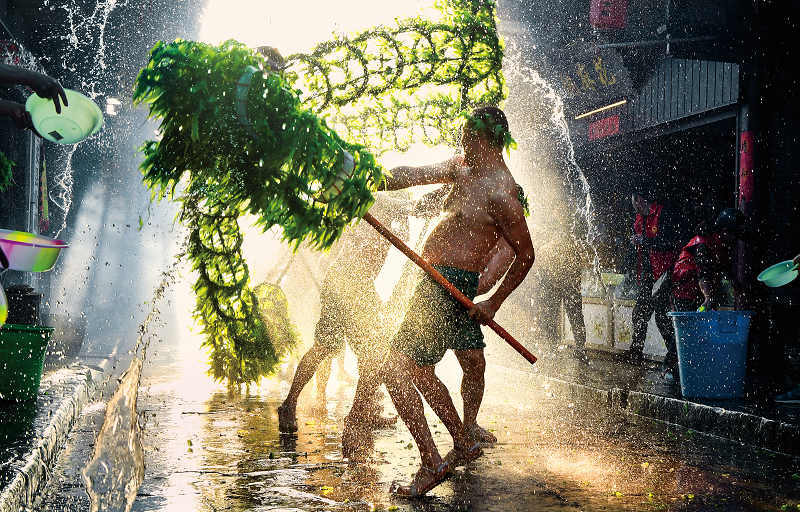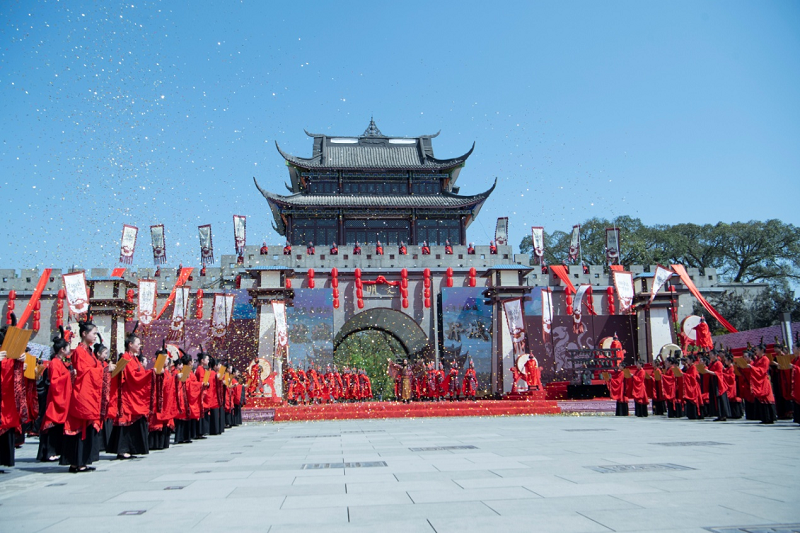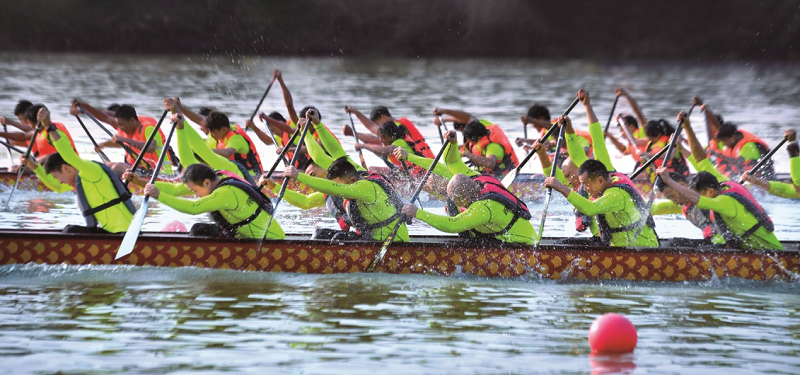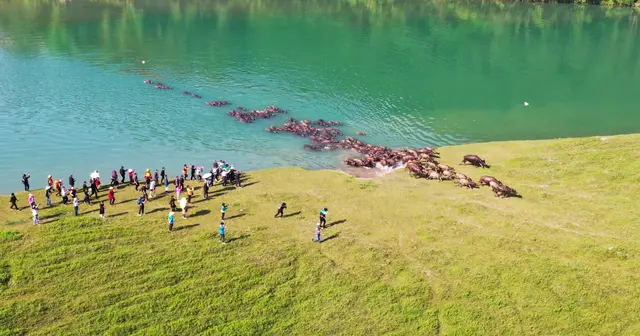Peng'an county in Sichuan province's Nanchong city is becoming a sought-after tourist destination thanks to the integrated development of culture and tourism.
Known as the hometown of Sima Xiangru (179-118 BC), a statesman, poet and musician, Xiangru had a grand opening in late April following renovation work. The ancient city has reinvented itself along the Jialing River as a model of cultural and tourism integration in Sichuan.
In 507, Xiao Yan, Emperor Wudi of the Liang Dynasty (502-557), divided Anhan county to unify the north and south of the country. He worshipped Sima, so he named the new county after him and took Sima's former residence as the county administration's seat.
After 13 dynasties,"Xiangru county", now in Peng'an county's Jinping town, became a small ancient city with developed culture and unique scenery at the end of the Qing Dynasty (1644-1911).
The main relics of the county are well preserved, including Sima's former residence and the Sima Bridge.
Since 2018, Peng'an county has treated the ancient Xiangru city as a "No 1 project" for the development of cultural tourism, protecting 13,000 square meters of ancient buildings and renovating more than 20 cultural relics and historical sites.
Since it was constructed and reopened, the ancient city has allowed tourists to experience a series of intangible cultural heritage folk programs and be charmed by traditional Chinese culture.
In the reaches of the Jialing River in Peng'an county, there are two huge islands-the Sun Island and the Moon Island.
The islands are lush with grass and a famous scene happens here every year from late spring to early fall. In Youfanggou village of Peng'an, herds of cattle swim through the Jialing River in the morning, graze on the islands during the day and return at dusk.
Making full use of this unique ecotourism resource, Peng'an county built a special scenic area to welcome tourists.
Since 2010, a tourist program called "cattle herding season on the Jialing River" has been held annually. It runs from the end of April to early October.
Over the past 12 years, the program has been increasingly well known, attracting tourists from all over the world. Youfanggou, once a poor and backward village, has become a model of rural revitalization in Sichuan.
Based on the cultivation of historical and cultural resources and the union of ecological advantages with innovative cultural experiences, Peng'an county forged the two cultural and natural tourist projects in question. They have become excellent examples of county-level integrated development of culture and tourism in Southwest China, according to the local government.
During this year's May Day holiday, the county received a total of 412,000 tourists, bringing in a total revenue of 183 million yuan ($28.25 million).
With efforts to continuously improve cultural and tourism integration, the county has seen the number of tourists and the comprehensive tourism revenue maintain a growth rate of more than 25 percent for three consecutive years.
Under the "culture plus tourism" model, Peng'an will add vitality to its culture and enrich the meaning of tourism via the deep integration of culture and tourism, according to Cui Zhujun, Party secretary of the Peng'an county.
Peng'an county is rich in ecotourism resources, including three State-level attractions: Dashen Nanhai water conservancy scenic area, Baiyun Mountain Forest Park and Xiangru Lake Wetland Park.
In addition, it has a raft of ancient buildings, and cultural heritage left by ancient masters such as Su Shi (1037-1101), also named Su Dongpo, and Zhou Dunyi from the Song Dynasty (960-1276).

Water dragon dance is a typical folk performance of Peng'an county.

The ancient Xiangru city has a grand opening in late April following renovation work.

A dragon boat race is held in the reaches of the Jialing River in Peng'an county.
(APD)
 简体中文
简体中文

